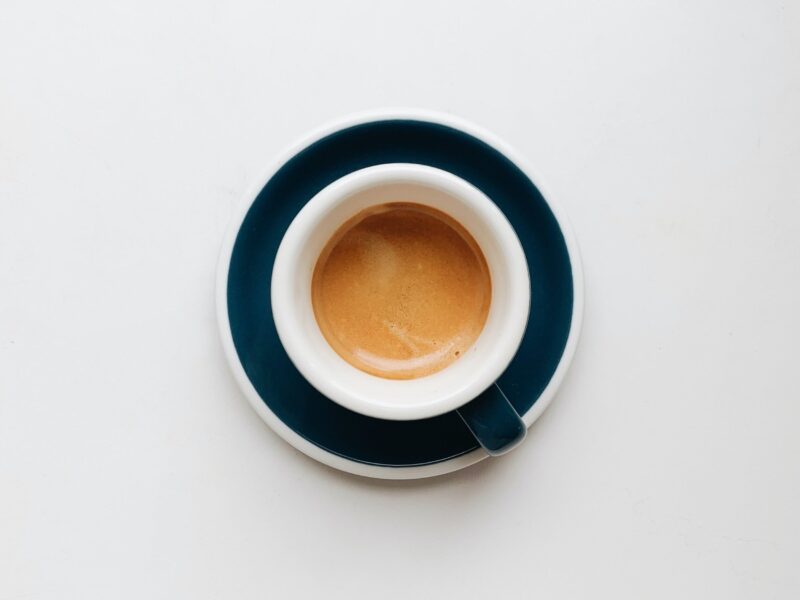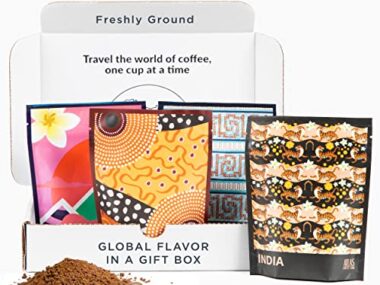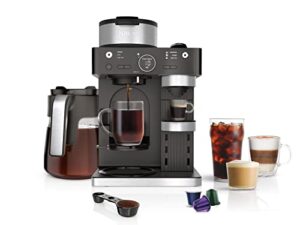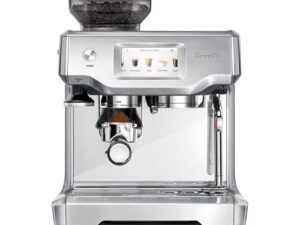The country that drinks the most coffee is Finland. This may surprise many, but Finns consume more coffee per capita than any other nation.
Why do Finns love coffee so much? Coffee has a long history in Finland, dating back to the 18th century. Over time, it became a central part of Finnish culture. People drink coffee at home, at work, and during social gatherings.
The cold climate also plays a role, as a warm cup of coffee is comforting. Coffee breaks, known as “kahvitauko,” are a cherished tradition in Finnish workplaces. Understanding Finland’s coffee culture offers a glimpse into the daily lives and habits of its people. It’s fascinating to see how one beverage can be so deeply woven into a nation’s fabric.

Credit: www.bbc.com
Global Coffee Consumption
Coffee is more than just a beverage. It’s a ritual, a culture, and a global phenomenon. The question of which country drinks the most coffee often sparks interest and curiosity. Understanding global coffee consumption patterns can shed light on this fascinating topic.
Trends In Coffee Drinking
Global coffee consumption has seen a steady rise over the past decades. Different countries have unique trends that reflect their cultural preferences and lifestyles. Here are some key trends:
- Europe: European countries are among the top consumers of coffee. Finland leads the pack with an average consumption of 12 kg per person per year. Norway and Iceland follow closely.
- North America: The United States is known for its love of coffee. Specialty coffee shops and instant coffee are both popular. On average, Americans consume about 4.2 kg per person per year.
- Asia: Coffee culture is growing in countries like Japan and South Korea. While tea remains popular, coffee shops are becoming a social hub.
The table below shows the average coffee consumption per person in some key countries:
| Country | Average Consumption (kg per person/year) |
|---|---|
| Finland | 12.0 |
| Norway | 9.9 |
| Iceland | 9.0 |
| United States | 4.2 |
| Japan | 3.3 |
Specialty coffee: The rise of specialty coffee has changed the coffee landscape. More people are seeking high-quality, ethically sourced coffee.
Convenience: Instant coffee and single-serve pods are popular for their convenience. Busy lifestyles drive this trend.
Cultural Significance
Coffee holds deep cultural significance in many countries. It’s not just about the drink; it’s about the experience and the rituals associated with it.
- Finland: Coffee is a social activity. Finns enjoy coffee breaks known as “kahvitauko” several times a day. It’s common to offer guests coffee when they visit.
- Italy: Espresso is a symbol of Italian culture. Italians typically enjoy their coffee standing at a bar. It’s quick, strong, and part of daily life.
- Turkey: Turkish coffee is a traditional drink with a rich history. It’s often served during social gatherings and special occasions. The preparation and serving process is an art form.
In the United States, coffee has become a symbol of productivity. The “coffee break” is an essential part of the workday. Coffee shops serve as places for socializing, working, and relaxing.
In Japan, coffee culture blends traditional and modern elements. Cafes range from quiet, serene spaces to bustling, trendy spots. Coffee is often enjoyed with sweets, reflecting a blend of Western and Japanese traditions.
These cultural nuances highlight the diverse ways in which coffee is enjoyed around the world. Understanding these customs adds to the appreciation of coffee’s global impact.
Top Coffee Consuming Countries
Many people around the world love coffee, but some countries have a special connection with this beloved drink. Exploring the top coffee consuming countries reveals fascinating cultural habits and traditions. Let’s dive into the coffee culture of these leading nations.
Finland’s Coffee Culture
Finland leads the world in coffee consumption. The average Finn drinks about 12 kg of coffee per year. This strong coffee culture is deeply rooted in their daily life.
In Finland, coffee breaks are an important part of the workday. These breaks are called “kahvitauko” and usually occur twice a day. Coffee is often enjoyed with a sweet pastry or a sandwich.
- Kahvi: Finnish word for coffee.
- Pullakahvit: Coffee with a sweet bun.
During social gatherings, coffee is a must. Whether it’s a family event or a casual meeting with friends, a cup of coffee brings people together.
| Event | Typical Coffee Served |
|---|---|
| Work Meetings | Black Coffee |
| Family Gatherings | Coffee with Milk |
| Festivities | Special Brewed Coffee |
Finland’s coffee culture isn’t just about quantity; it’s about quality and connection. The Finns take their coffee seriously, ensuring every cup is rich and flavorful.
Norway’s Daily Ritual
Norway also ranks high in coffee consumption. Norwegians drink nearly 10 kg of coffee per person annually. Coffee is a daily ritual for many Norwegians.
In Norway, coffee is consumed throughout the day. The first cup often begins with breakfast. The tradition continues with several more cups during the day. Norwegians prefer their coffee black and strong.
There are several common practices in Norway’s coffee culture:
- Morning Coffee: A strong brew to start the day.
- Work Breaks: Coffee is enjoyed during short work breaks.
- Evening Coffee: Often served with dessert.
Socializing over coffee is also very common. Friends and family gather in homes or cafes, sharing stories over a cup of coffee. This practice is known as “kaffekos,” which means enjoying coffee in a cozy atmosphere.
Norwegians value the experience of drinking coffee. It’s not just about the caffeine but the ritual and the connections made over each cup. From early morning to late evening, coffee is a beloved part of Norwegian life.
Coffee Consumption Per Capita
Coffee is more than just a beverage; it’s a part of culture in many countries. When we talk about which country drinks the most coffee, we often look at coffee consumption per capita. This metric helps us understand how much coffee each person in a country consumes on average. By examining this data, we can identify the world’s biggest coffee drinkers and understand their coffee culture better.
Measuring Per Capita Consumption
Per capita coffee consumption is a useful way to measure how much coffee people drink in a specific country. This measurement takes the total amount of coffee consumed and divides it by the population. This gives an average amount of coffee each person drinks in a year.
To measure per capita coffee consumption, data from various sources are used, such as:
- National coffee associations
- Surveys and studies
- Import and export data
The results can be surprising. For instance, some of the top coffee-consuming countries per capita are not the largest countries in terms of population. Here are some of the top countries by coffee consumption per capita:
| Country | Annual Coffee Consumption (kg per person) |
|---|---|
| Finland | 12 |
| Norway | 9.9 |
| Iceland | 9 |
These numbers show that people in these countries drink a lot of coffee every year. This high consumption can be linked to their cultures and daily routines.
Factors Influencing Consumption
Several factors influence coffee consumption per capita. One major factor is cultural habits. In some countries, coffee drinking is a part of daily life. For example, in Finland, coffee breaks known as “kahvitauko” are common in workplaces.
Climate also plays a role. In colder countries, people might drink more coffee to stay warm. This could be one reason why Nordic countries have high coffee consumption rates.
Economic factors are also important. In wealthier countries, people can afford to buy more coffee. They might also have access to better coffee-making equipment.
Here are some other factors that influence coffee consumption:
- Availability of coffee shops
- Quality and variety of coffee
- Advertising and marketing
- Work culture and schedules
Understanding these factors helps explain why some countries drink more coffee than others. Each of these elements contributes to the overall coffee culture in a country.
The Role Of Coffee In Society
Many countries around the world cherish coffee as part of their daily routine. Among these, one country stands out for its coffee consumption: Finland. Coffee plays a vital role in Finnish society, influencing social interactions and the economy.
Social Gatherings
In Finland, coffee is more than just a beverage; it’s a social lubricant. It is present at all sorts of gatherings.
Consider these common scenarios:
- Family gatherings: Coffee is served during family visits and special occasions. It brings people together.
- Work breaks: Finns often have ‘kahvitauko,’ a coffee break, fostering a sense of community at the workplace.
- Celebrations: Birthdays, weddings, and even funeral wakes feature coffee as a staple offering.
Coffee’s role in social settings is pivotal:
- Encourages conversation
- Strengthens bonds
- Creates a warm, welcoming atmosphere
Finnish people consume coffee to connect with others. This tradition makes coffee an essential part of their social fabric.
Economic Impact
Coffee consumption also has significant economic impacts in Finland.
Here are a few key points:
- Employment: The coffee industry provides jobs to many Finns, from baristas to importers.
- Local businesses: Cafés and coffee shops thrive, contributing to local economies.
- Imports: Finland imports large amounts of coffee, supporting international trade.
Let’s take a look at some figures:
| Aspect | Impact |
|---|---|
| Coffee shops | Over 2,000 establishments |
| Employment | Thousands of jobs |
| Imports | 60 million kg/year |
These points highlight coffee’s role in boosting Finland’s economy. It’s clear that coffee is not just a drink; it’s a significant economic driver.
Types Of Coffee Beverages
When exploring the question of what country drinks the most coffee, it’s important to understand the different types of coffee beverages enjoyed worldwide. Each country has its unique preferences and methods of brewing coffee, influencing how much coffee is consumed. Let’s delve into the popular coffee beverages and how they differ across the globe.
Espresso Vs. Filter Coffee
Two main types of coffee beverages dominate the global coffee culture: espresso and filter coffee. Each has its unique characteristics and fan base.
Espresso is a strong coffee made by forcing hot water through finely-ground coffee beans. It is often served in small, concentrated shots. Here are some key points:
- Rich flavor and intense aroma
- Thick, creamy layer of crema on top
- Quick to prepare, typically under 30 seconds
- Forms the base for many coffee drinks like lattes, cappuccinos, and macchiatos
Filter Coffee, on the other hand, involves brewing coffee by pouring hot water over ground coffee, which then passes through a filter. Characteristics include:
- Milder flavor compared to espresso
- Typically served in larger quantities
- Longer brewing time, often several minutes
- Preferred for its smooth taste and clarity
Here’s a comparison table to illustrate the differences:
| Feature | Espresso | Filter Coffee |
|---|---|---|
| Flavor | Rich and intense | Mild and smooth |
| Serving Size | Small shots | Larger cups |
| Brewing Time | Quick (under 30 seconds) | Longer (several minutes) |
| Usage | Base for many drinks | Enjoyed on its own |
Local Variations
Different countries have their own unique coffee beverages and brewing methods, reflecting local tastes and traditions.
Italy is synonymous with espresso. Italians enjoy their coffee quickly, often while standing at a bar. Variants include:
- Macchiato: Espresso with a dash of milk foam
- Cappuccino: Equal parts espresso, steamed milk, and foam
- Latte: Espresso with more steamed milk and a little foam
Turkey offers a distinct coffee experience with Turkish coffee. It is known for:
- Finely ground coffee boiled with water and sugar
- Served unfiltered, allowing grounds to settle at the bottom
- Rich, strong flavor with a thick consistency
Vietnam is famous for its iced coffee, known as Cà phê sữa đá. Key aspects include:
- Strong coffee brewed with a drip filter
- Mixed with sweetened condensed milk
- Poured over ice for a refreshing drink
In Finland, coffee is a daily ritual. The Finnish prefer:
- Light-roast filter coffee
- Enjoyed throughout the day in large quantities
- Often paired with pastries or bread
Understanding these local variations helps appreciate the diverse ways people enjoy coffee around the world. Each country contributes to the rich tapestry of global coffee culture.
Health Effects Of Coffee
Many people around the world love coffee. But which country drinks the most coffee? Finland holds the top spot. Coffee is a big part of their culture. But is coffee good for you? Let’s look at the health effects of coffee.
Benefits Of Moderate Consumption
Moderate coffee consumption can be beneficial. Drinking coffee in moderate amounts can offer several health benefits. Here are some key points:
- Boosts Energy Levels: Coffee can help you feel less tired. It increases energy levels.
- Improves Mental Focus: The caffeine in coffee can enhance brain function. It improves memory and mood.
- Rich in Antioxidants: Coffee is packed with antioxidants. These help fight free radicals in the body.
Research shows that moderate coffee drinkers have a lower risk of certain diseases. Here is a table with some of the benefits:
| Health Benefit | Description |
|---|---|
| Reduced Risk of Type 2 Diabetes | Coffee drinkers have a lower risk of developing type 2 diabetes. |
| Lower Risk of Parkinson’s | Caffeine intake is linked to a lower risk of Parkinson’s disease. |
| Heart Health | Moderate coffee consumption can be good for heart health. |
Potential Risks
While coffee has benefits, there are also potential risks. Drinking too much coffee can lead to health problems. Here are some potential risks:
- Insomnia: Too much caffeine can make it hard to sleep.
- Increased Heart Rate: High caffeine intake can cause a rapid heartbeat.
- Digestive Issues: Excessive coffee can cause stomach problems.
It’s important to understand the risks. Here is a table summarizing some potential issues:
| Health Risk | Description |
|---|---|
| Anxiety | High caffeine levels can increase anxiety. |
| Dependency | Regular consumption can lead to caffeine dependency. |
| High Blood Pressure | Excessive intake may cause elevated blood pressure. |
Moderation is key. Enjoy coffee, but be mindful of the amount you consume.
Coffee Production And Supply
Ever wondered which country drinks the most coffee? While the answer might surprise you, the journey of coffee from farm to cup is just as interesting. Coffee production and supply play a crucial role in ensuring your daily brew reaches you fresh and flavorful. Let’s explore the leading coffee producers and the sustainability issues they face.
Leading Coffee Producers
Several countries stand out as the top producers of coffee in the world. These nations have ideal climates and conditions for growing coffee beans.
Here are some of the leading coffee producers:
- Brazil: The largest producer, Brazil, provides around one-third of the world’s coffee. The country’s vast plantations and favorable climate contribute to its high output.
- Vietnam: Known for its robusta beans, Vietnam is the second-largest producer. Its coffee is typically strong and used in instant coffee blends.
- Colombia: Famous for its rich, aromatic coffee, Colombia ranks third. Its high-altitude farms produce some of the finest arabica beans.
- Indonesia: This country is known for its unique coffee varieties, including the famous Kopi Luwak. Indonesia is one of the top producers of robusta beans.
- Ethiopia: The birthplace of coffee, Ethiopia offers a diverse range of flavors. Its coffee is often fruity and floral.
Here is a table summarizing the top coffee producers and their contributions:
| Country | Production (in million bags) | Main Coffee Type |
|---|---|---|
| Brazil | 59 | Arabica |
| Vietnam | 30 | Robusta |
| Colombia | 14 | Arabica |
| Indonesia | 11 | Robusta |
| Ethiopia | 7 | Arabica |
Sustainability Issues
Coffee production faces several sustainability challenges. These issues affect both the environment and the farmers who grow coffee.
Some key sustainability issues include:
- Deforestation: Expanding coffee plantations often leads to deforestation. This destroys habitats and contributes to climate change.
- Water Usage: Coffee cultivation requires significant amounts of water. In some regions, this leads to water shortages and affects local communities.
- Pesticide Use: Many coffee farms use pesticides to protect crops. These chemicals can harm the environment and pose health risks to workers.
- Fair Trade: Many coffee farmers receive low wages. Fair trade practices aim to ensure fair compensation and improve living conditions.
- Climate Change: Changing weather patterns affect coffee yields and quality. This makes it harder for farmers to predict and manage their crops.
Addressing these issues requires a collective effort from producers, consumers, and organizations. Supporting sustainable coffee practices can help protect the environment and improve the livelihoods of farmers.

Credit: www.theatlantic.com
Future Of Coffee Consumption
Have you ever wondered which country drinks the most coffee? Finland takes the lead. Coffee is deeply ingrained in their culture. But what does the future hold for coffee consumption globally? Let’s explore the emerging trends and the impact of technology on this beloved beverage.
Emerging Trends
The coffee industry is always evolving. New trends emerge each year. Here are some key trends shaping the future of coffee consumption:
- Specialty Coffee: Consumers seek high-quality beans. They prefer unique flavors and origins.
- Sustainability: Eco-friendly practices are a priority. People want ethically sourced coffee. Recyclable packaging is in demand.
- Health Consciousness: Healthy coffee options are popular. Cold brew and nitro coffee are examples.
- Ready-to-Drink: Convenience is key. Ready-to-drink coffee is growing fast. It appeals to busy lifestyles.
These trends are driven by a desire for better quality and sustainability. Consumers are willing to pay more for premium coffee. They also care about the environmental impact of their choices.
In Finland, the trend towards specialty coffee is evident. Coffee shops offer a variety of unique brews. Organic and fair-trade options are on the rise.
| Trend | Description | Example |
|---|---|---|
| Specialty Coffee | High-quality beans with unique flavors | Single-origin coffee |
| Sustainability | Eco-friendly and ethically sourced coffee | Fair-trade coffee |
| Health Consciousness | Healthier coffee options | Cold brew |
| Ready-to-Drink | Convenient coffee options | Bottled iced coffee |
Impact Of Technology
Technology is transforming the coffee industry. Innovations are making coffee more accessible and enjoyable. Here are some ways technology impacts coffee consumption:
- Smart Coffee Makers: These devices allow for remote brewing. You can control them with your smartphone. Set your preferences and brew from anywhere.
- Subscription Services: Get fresh coffee delivered to your door. Monthly subscriptions ensure you never run out. Customize your delivery based on your taste.
- Blockchain for Traceability: Blockchain technology tracks coffee from farm to cup. It ensures transparency. You can verify the source of your coffee.
- Mobile Apps: Apps make it easy to order coffee. Many cafes offer loyalty programs through apps. This boosts customer engagement.
Smart coffee makers are popular in Finland. They offer convenience and consistency. People love brewing their favorite coffee with just a tap on their phone.
Subscription services are also gaining traction. Consumers value the freshness and variety of coffee delivered to their homes. It saves them time and effort.
Blockchain technology enhances trust. It provides detailed information about the coffee’s journey. This is important for consumers who care about ethical sourcing.
Mobile apps simplify the coffee-buying process. They offer personalized recommendations. Loyalty programs reward frequent customers.
In summary, technology is reshaping the coffee landscape. It brings convenience, transparency, and customization to coffee lovers worldwide.

Credit: bruvi.com
Frequently Asked Questions
Which Countries Drink The Most Coffee In The World?
Finland consumes the most coffee per capita. Norway, Iceland, Denmark, and the Netherlands also rank high in coffee consumption.
Do Americans Drink The Most Coffee In The World?
No, Americans don’t drink the most coffee in the world. Finland has the highest coffee consumption per capita.
Which Country Is No 1 Coffee In The World?
Brazil is the top coffee producer in the world. It leads in both quantity and quality of coffee beans.
What Country Drinks The Least Coffee?
Nepal drinks the least coffee. This country primarily prefers tea over coffee, resulting in low coffee consumption.
Conclusion
Coffee fuels many lives around the world. Scandinavian countries lead in consumption. Finland tops the list, with its people enjoying multiple cups daily. Other nations like Norway and Sweden follow closely. Each country has its unique coffee culture. From cozy cafes to social gatherings, coffee plays a vital role.
Understanding these habits reveals much about global coffee trends. So, grab a cup and enjoy your next brew, knowing its global impact. Keep exploring the world of coffee. It’s rich and full of surprises.








